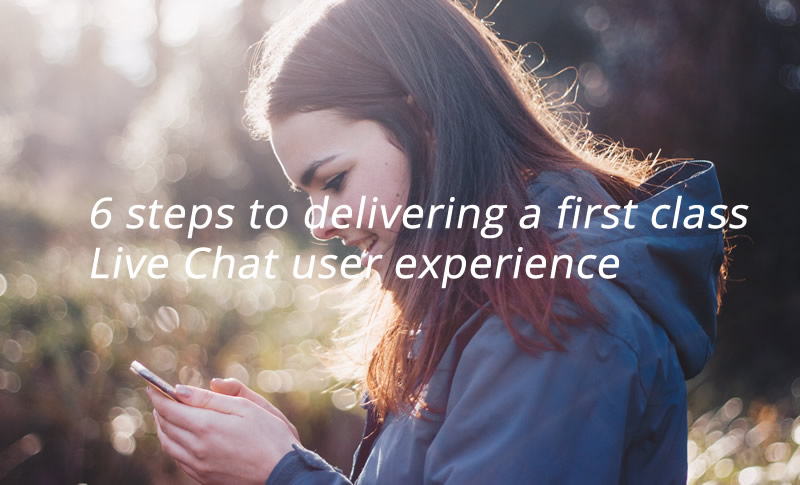![livechatUX]()
Live Chat has come a long way since AIM and MSN
We’ve come a long way from the sound of a slamming door as one of your buddies leaves AOL AIM or nudging someone on MSN Messenger. Would you believe me if I told you that MSN Messenger was released 18 years ago? In its most basic form, instant messaging has actually been possible for over 50 years. This has now developed from a personal communication tool to a key consideration for business.
Over 19,000 companies across 140 countries have taken the idea of instant messaging and utilised this as a tool to offer speedy support to customers online. Resulting in 235.7 million chats from 2014 – 2016 (and those stats are only from one live chat software provider).
In a recent survey with our user research panel, the speed of response and eliminating the need to wait in a call centre queue were the two biggest reasons for using Live Chat over other means of contact. Live Chat is certainly becoming more prevalent online. Of the people surveyed, 90% told us they had used Live Chat previously with 36% of these having used live chat at least 6 times in the last year.
When it’s done right Live Chat presents a great business opportunity
Live Chat offers lots of benefit to businesses too. Not only can you offer great service, help customers to complete their purchase and improve the perception of your brand, it’s also an opportunity to uncover usability issues. By analysing the chat data you can uncover those questions that aren’t currently being answered on your site. Those chat transcripts may contain nuggets of UX gold!
With the expectation of Live Chat, comes the expectation that it’s well staffed, fast to respond and genuinely useful. A poor experience can really damage someone’s perception of your brand, especially if they are making contact because they’re already feeling aggrieved about something that has gone wrong.
Live Chat is a real challenge for businesses today and by no means is it a silver bullet. There’s a minefield of questions that come with implementing this kind of tool. Where does it go? What does it look like? We’ve put together some tips on how to optimise the experience to ensure it’s smooth and enjoyable for users, rather than an annoyance.
Six steps to delivering a first class Live Chat user experience
1. Ensure users know how to find Live Chat easily by placing the call-to-action in the bottom right hand area of the website.
2. Draw more attention to the call-to-action by loading it a couple of seconds after the rest of the page content. Moo & Kidly are great examples of this:
Moo delay the load of their Live Chat call-to-action, drawing more attention to it.
Kidly use the same method to ensure users spot their Live Chat easily
3. Help to overcome the ‘is this a real human?’ barrier by displaying the adviser’s first name and showing a realistic photo.
4. Make it easy for users to continue browsing without Live Chat getting in the way, by loading the chat window in situ within the browser window, and allowing users to minimise it.
5. Reduce the need for users to learn new things by mimicking the visual style of everyday messaging services like Facebook Messenger and WhatsApp.
6. Allow users to minimise the web chat window but give them a clear notification of any new messages.
We’ve wrapped this all up in a prototype and created a video of the optimal experience.
A demo of how to combine those six steps to make a great Live Chat experience
Alternative ways to implement Live Chat
We understand that providing Live Chat functionality can put a lot of strain on internal resources, so showing it throughout the website might not always be viable. There are a couple of other options to consider, which will be seen by a smaller percentage of website users.
Showing Live Chat after a couple of minutes of browsing is a subtle way to offer help. Think of it as a shop assistant asking if you’d like any help once you’re half way around the shop, rather than pouncing on you the second you walk in the door. Lloyds Bank do this really well, showing a chat call-to-action after being on the site for a couple of minutes and navigating through a handful of pages.
Lloyds Bank only show Live Chat to users that they believe might need some help
A compromise we’re seeing more and more is for companies to only display links to their Live Chat on certain pages. By allowing users to access Live Chat from areas like customer services and contact pages you have the opportunity to really help them when they’re actively looking for answers or about to get in touch.
If done well, Live Chat can be a powerful tool in your customer service strategy. Following the tips in this article should help you to provide a great service to customers through an enjoyable experience.
If you’re interested in finding out more about how to implement great UX (such as Live Chat!) and see real results, then don’t miss out on our next UX Bournemouth event. Monday 3rd July @ Canvas, Bournemouth. Tickets just £9.50 via Eventbrite
The post 6 steps to delivering a first class Live Chat user experience appeared first on Experience UX.
